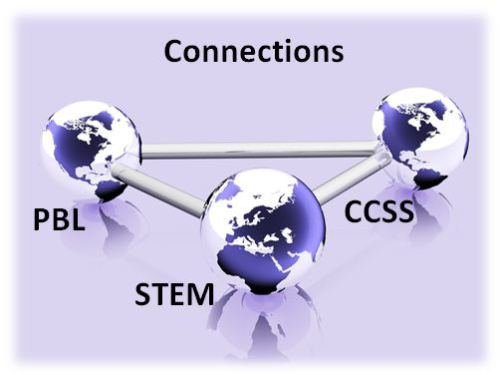This is the first post for the “From the Files” Tuesday. I figured it’s about time I begin to share some of the most vital keys of evidence I’ve been able to amass since 2009, when I first began researching the march to adhere, align and embrace national standards for a ‘one-size-fits-all’ educational approach. My goal is to lay the foundation clearly enough, you should be able to easily pick up the interconnections and see where it all is today.
I’ll be honest, this document is long, 130 pages. However, the reason I chose to begin with this one is, simply, it’s one of the foundation pieces that directly details how STEM is the driving force behind CCS (Common Core Standards). After reading this, you should be able to see that CC is a vehicle, or sorts to a bigger purpose. Here’s the PDF file: pcast-stemed-report (if you are interested in my presenting not only more about this, but the detailed inventory list, let me know. I LOVE sharing information that is useful, vital and educational).
- Nuggets of information include clear bipartisan support in the need for education reform in general (page vi); on page v, increasing federal involvement in education and a presence of public private partnerships is also brought into play. I found it interesting that the P3s were mentioned before the states.
All that stated, here is why I find this document so vital: 1) it’s from September 2010. The official title of the report is Report to the President, Prepare & Inspire K-12 Education in STEM for America’s Future (BTW, this PDF is the prepublication version) 2) PCAST is the President’s Council of Advisors on Science and Technology. A group from inside the White House, Cabinet and other federal departments comprised of the leading scientists and engineers. Their job is to create policy recommendations on all kinds of issues. If you would like more information on this group:
http://www.whitehouse.gov/administration/eop/ostp/initiatives
3) the goal of the PDF was a then, new strategy for improving K-12 education. Notice in the introduction of the report these key items: the 2 prongs and 5 overarching priorities therein to transforming education (we must prepare students & inspire those motivated to the point of STEM for life) via a) federal leadership in education must be improved; b) federal government supportive of a common baseline via the new state led initiative; c) recruit more STEM teachers; d) STEM outside schools; e) federal government support the states and schools as they transform. Here’s the closing statement the co-chairs of the PCAST made, “We are confident that the report provides a workable, evidence-based roadmap for achieving the vision you have so boldly articulated for STEM education in America,”
Before we get much further into the PDF I’m sharing, When you access the above website, notice just how many of the initiatives PCAST has that are in the thick of CCS. Now, back to the PDF report.
- Timeline you’ll need (it’s in the report in all kinds of locations, but I’ve made it a bit easier for you): 1989– Nat’l Council of Math Teachers (NCMT) create standards as do the American Assoc. for Advancement of Science (AAAS); 1993– benchmarks for science literacy created (Project 2061); 1994– Goals 2000 joined science & math with the “Improve America Schools Act”, ESEA was re-established; 1995– NCMT determines need to examine standards periodically, thus creating the first piece of the foundation for 21st Century goals. 1997– UTeach Master Teacher Corps established. 2001– No Child Left Behind; 2007– “America Competes”; 2008– Excerpt: “An important and encouraging advance has been the work since 2008 of a state-led initiative to forge clear, consistent, and higher standards for mathematics and English language arts education in grades K-12 that can be shared across states. This effort is being led by the National Governors Association and the Council of Chief State School Officers, with support and input from a variety of educational and business organizations. Common mathematics standards were released in June 2010, reflecting an unprecedented degree of cooperation on K-12 mathematics education. As of this report’s publication in September 2010, 36 states and the District of Columbia had adopted the common core standards in mathematics and English language arts. There is also considerable interest in the adoption of similar standards for science. In July 2010, the National Research Council released for public comment its draft framework to guide the development of new standards for K-12 science education, and a final version will be published in early 2011. The organization Achieve, Inc., will work with a group of states to develop standards for K-12 science aligned to this framework by the end of 2012. While it is still uncertain whether the new science standards will be incorporated into existing common standards efforts, the implementation of common standards in both mathematics and science will be tremendously important. While elementary and secondary education in the United States is primarily a state responsibility, standards in mathematics, science, technology, and engineering that are widely shared among the states would serve both the states and the Nation. They would allow cross-state comparisons to guide improvements in education systems. They would drive more focused, coherent programs to prepare and support teachers. They would create larger markets for new and more effective instructional materials and technologies, along with high-quality assessments that measure all the important aspects of science learning. And they would reflect the reality that U.S. students will compete for jobs and work in a national and international economy driven by advances in technology.”; 2009– PCAST & Sec. of Ed, Arne Duncan meet. A description of administrative level initiatives and future education plans discussed at length. (this is where Race to the Top would come into play). It is shared that federal funding only existing could carry out plans. Here’s the excerpt: ‘Many of the recommendations in this report can be carried out with existing Federal funding. Some of the recommendations could be funded in part through existing programs, although new authorities may be required in certain cases. Depending on these choices, the new funding required to fully fund the recommendations could reach up to approximately $1 billion per year. This would correspond to the equivalent of roughly $20 per K-12 public school student; or 2 percent of the total Federal spending of approximately $47 billion on K-12 education; or 0.17 percent of the Nation’s total spending of approximately $593 billion on K-12 education. Not all of this funding must come from the Federal budget. We believe that some of the funding can come from private foundations and corporations, as well as from states and districts.’
- The Chapters most needed for tying STEM to CC and revealing the greater purposes: Chapter 2 in the “Implications”; Chapter 4 is by far the most revealing with its “Shared Access”. I’ll be pointing out the rest of the information I think most vital to our CCS fight by page number. However, before I do that, when you get to the Appendices A & B, be sure to note the key companies we now know to be the kingpins in CCS. MacGraw-Hill, Pearson, Cargnegie, U.S. Dept. of Ed., Achieve, Inc., Brookings Institute and PISA are just a few.
Pages of most importance: Page 9, note the studies used to support the PCAST’s report to the President (all are CC supportive); page 11, will show you the need for STEM capable citizenry, STEM proficient workforce & how the federal government should vigorously support state-led efforts for common standards; page 13 reveals the federal government should substantially increase its capacity in education via in part through the Dept. of Education and the National Science Foundation (don’t worry, the National Governor’s Association is included as well); page 15, ‘all citizens should __________.’ (I want you to read it for yourselves); page 17, states that for STEM to succeed (and all those citizens & workforce) it must be incorporated into the broader K-12 education reform via a comprehensive approach at every educational level, with particular advantage given to Sec. Duncan. Page 20, will show you the states adopting all this are desperately needed. Page 21, tells how while the federal government only supplies about 8% of all education funding, if they are wise & use the money effectively they can advance the national priorities. Also on this page, what other federal agencies are being used to achieve this. (I have a detailed STEM inventory account that reveals much more. IF you are interested & would like a copy, leave me a request & contact information in the comments) Page 23, gives a brief look at the money/agencies being used are on page 26. Skip ahead to page 44, & you will see the math & science strands intertwining. Around page 45 is Chapter 4 & where most of the information tying CCS will be found. Notice on page 46 the number of organizations being used to formulate guidelines, principles and standards to be incorporated into education and the reformation, thereof. Page 47, will help you understand why PARCC and SBAC are of such interest to the government. ($360 million was set aside). Page 48, look at the 6 ways one standard in education is measured. By page 50, you’ll be convinced that by aligning so much in education, you’ll be able to save money and guess how?! Technology!! Why on page 56, the federal government should provide incentives in the form of dollars to do this with assessments and not just nationally, but internationally, as well. You who like the quote by Mr. Gates about needing 10 years will love this…on page 59, It goes something like, ‘it’ll take 10 to 20 years before definitive research is available to define best practices for teachers..but, for now, we’ll do the best we can with our common sense, professional judgement and increasing money to train teachers. Especially via ARPA-ED’ (http://www.ed.gov/technology/arpa-ed: Stands for Advanced Research Projects Agency for Education). On pages 89 and surrounding, you can learn how STEM is meant to be a 21st Century Community Learning Center kingpin (whole other topic/agenda). Lastly and NOT be left out, those IB and AP courses (International Baccalaureate and Advanced Placement) as well as all those on-line college courses (see pages 94 & 95).
Well, there you have it..Yes, it was long, but can you see what this is SO important? Have you been able to connect how important it is that we, the opposed to Common Core Machine (because it is being proven that ‘just standards’ doesn’t begin to encompass it), have this. Be sure to leave feedback about how helpful this is to have resources like this and/or if you’d like more. If there’s a specific “From the Files” topic you’d like to see featured, be sure to let me know.



Reblogged this on Exceptional Delaware and commented:
Here comes the science Common Core standards. What’s the origin of all of this? Did STEM lead the way? Read the PDF, it gives a lot of information!